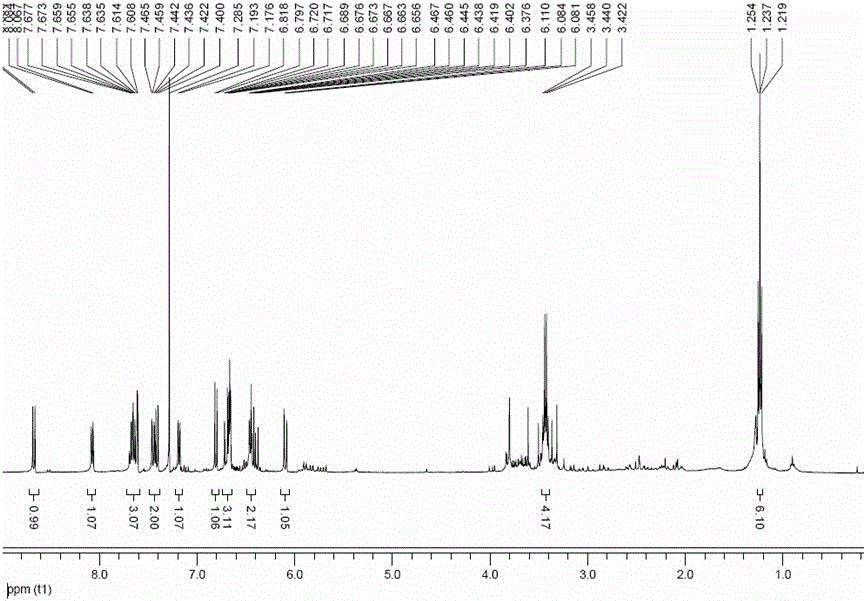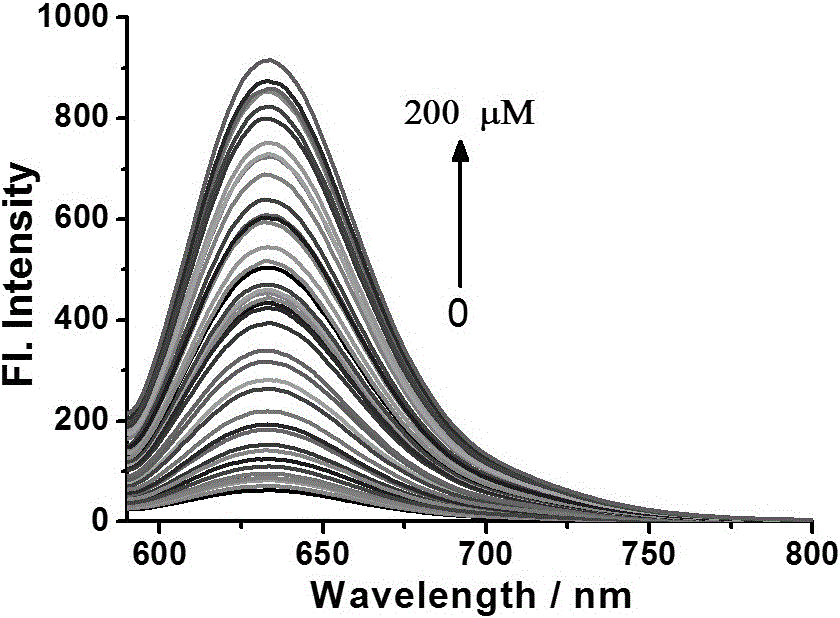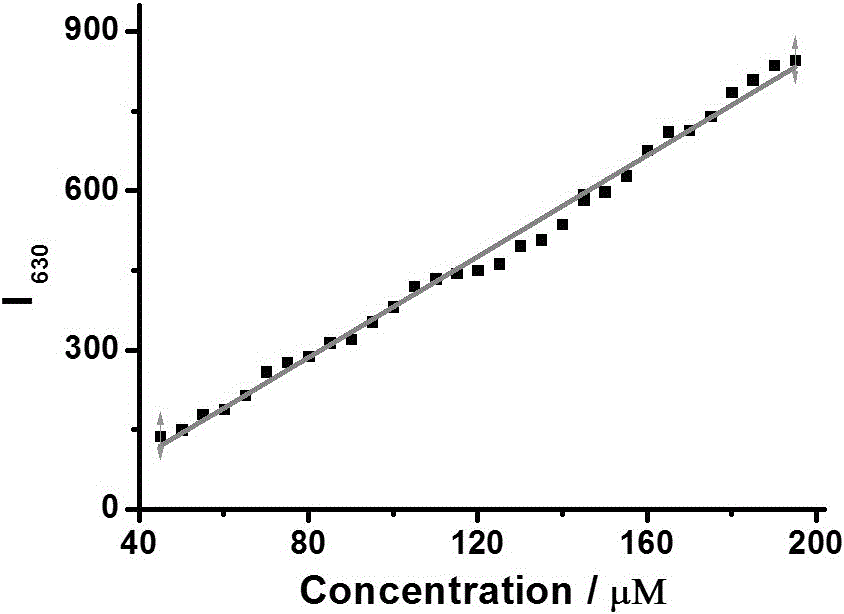Fluorescent probe for detecting cysteine in cell
A technology of fluorescent probe and cysteine, which is applied in the field of analytical chemistry, can solve the problems of decreased hematopoietic function and slow growth, and achieves the effects of low preparation cost, high specificity and easy promotion
- Summary
- Abstract
- Description
- Claims
- Application Information
AI Technical Summary
Problems solved by technology
Method used
Image
Examples
Embodiment 1
[0027] Preparation of fluorescent probe for detecting cysteine in cancer cells according to the present invention
[0028] Compound (1 mmol), (1 mmol), 1-(3-dimethylaminopropyl)-3-ethylcarbodiimide (2 mmol), 1-hydroxybenzotriazepam shown in formula (II) Add azole (1.5 mmol), triethylamine (2.2 mmol) and N,N-dimethylformamide (5 mL) into a 50 mL one-necked flask, stir at room temperature for 16 hours, cool to room temperature, add to water, filter, drying. The resulting solid was purified by column chromatography (dichloromethane:methanol=15:1) to obtain a dark red product, which is a fluorescent probe for detecting intracellular cysteine according to the present invention, with a yield of 43%.
[0029] The above-mentioned fluorescent probes for detecting intracellular cysteine 1 H NMR spectrum see figure 1 .
Embodiment 2
[0031] The fluorescence spectrum of fluorescent probe of the present invention under different cysteine concentrations
[0032] Cysteine is supplied in aqueous solution using cysteine. Prepare ten 5 mL portions of 5 μM probe buffer solution containing 5% methanol in advance, and add cysteine at a concentration of 0 to 150 μM. Fluorescence detection is then performed (λ Ex = 580 nm); Calculate the fluorescence intensity in each system; By analyzing the relationship between the fluorescence intensity at 630 nm and the concentration of cysteine, evaluate the response performance of the probe to cysteine (see figure 2 and image 3 ). figure 2 It shows that with the increase of cysteine concentration, the fluorescence intensity of the solution increases gradually. image 3 It is shown that when the concentration of sodium sulfide is in the range of 40-200 μM, the fluorescence intensity of the solution and the concentration of cysteine are in a good linear relation...
Embodiment 3
[0034] Fluorescence spectra of fluorescent probes reacted with different substances
[0035] Prepare 10 parts of 5 mL of 5 μM probe buffer solution (containing 5% methanol, pH = 7.4), and then add 50 μL of 200 μM Hcys, Na 2 S, Na 2 SO 3 , NO, H 2 o 2 , HClO 4 , Cys, GSH, NaNO 2 , VC and other small molecules in PBS solution. Fluorescence detection is then performed (λ Ex = 580 nm); calculate the fluorescence intensity in each system; evaluate the interference of different substances to the fluorescent probe solution (see Figure 4 ). It can be seen from the figure that, of course, adding Hcys and Na to the probe solution 2 S, Na 2 SO 3 , NO, H 2 o 2 , HClO 4 , GSH, NaNO 2 , VC and other small molecules, only cysteine can cause the solution to produce significant fluorescence, but the fluorescence of the solution basically does not change when other small molecules are added, which means that the probe only responds to cysteine, and basically does not Interfer...
PUM
 Login to View More
Login to View More Abstract
Description
Claims
Application Information
 Login to View More
Login to View More - R&D
- Intellectual Property
- Life Sciences
- Materials
- Tech Scout
- Unparalleled Data Quality
- Higher Quality Content
- 60% Fewer Hallucinations
Browse by: Latest US Patents, China's latest patents, Technical Efficacy Thesaurus, Application Domain, Technology Topic, Popular Technical Reports.
© 2025 PatSnap. All rights reserved.Legal|Privacy policy|Modern Slavery Act Transparency Statement|Sitemap|About US| Contact US: help@patsnap.com



